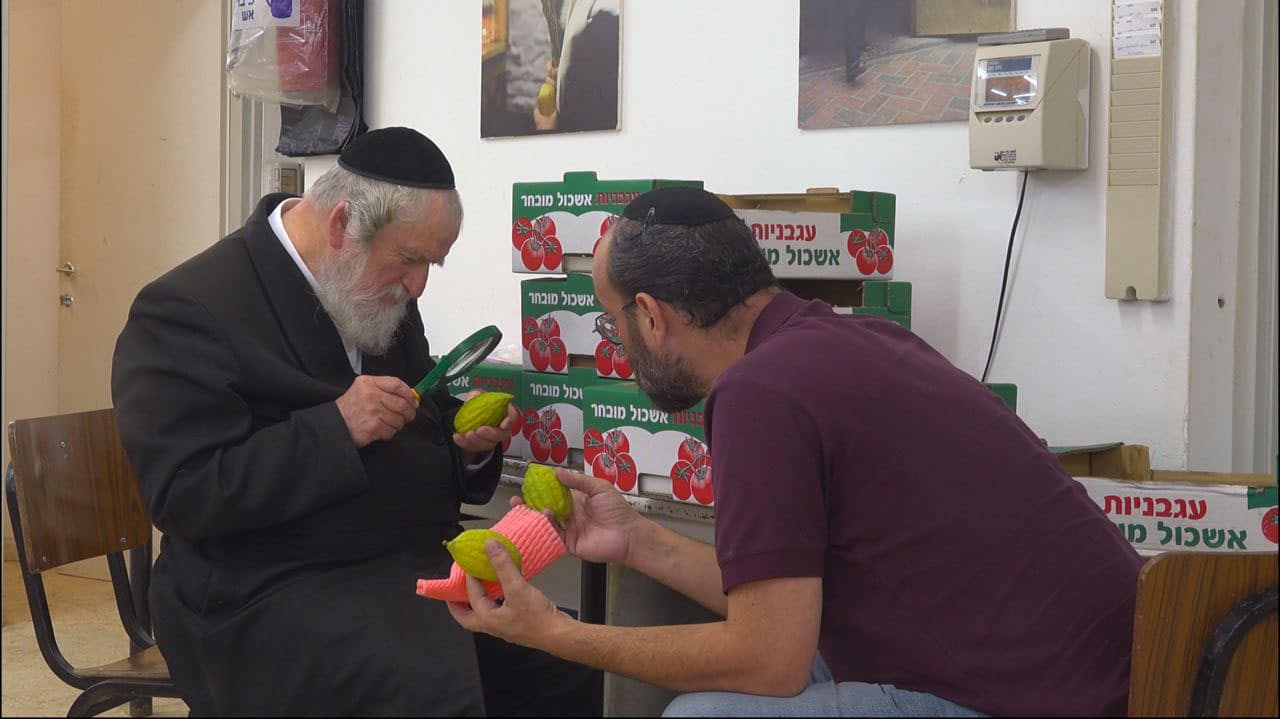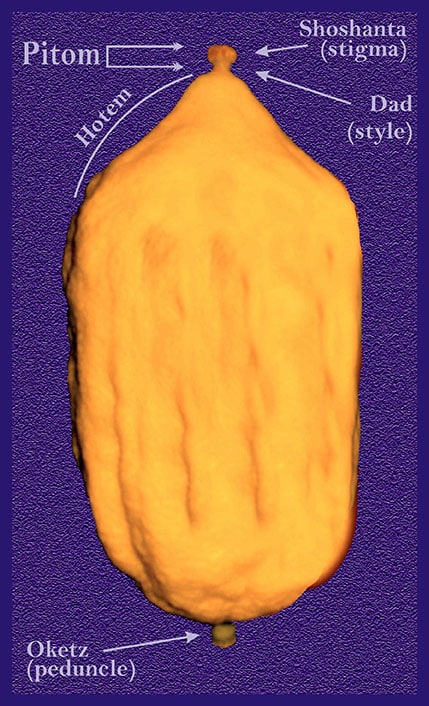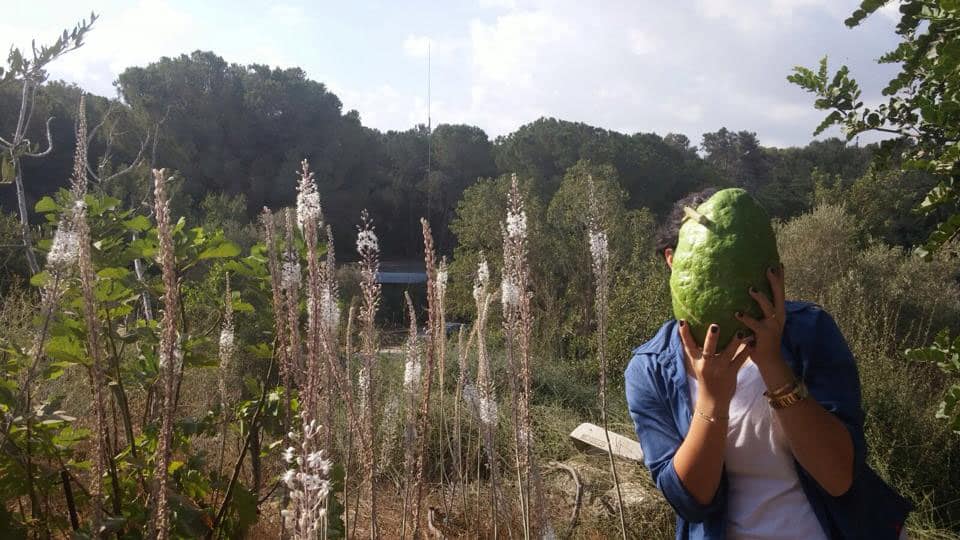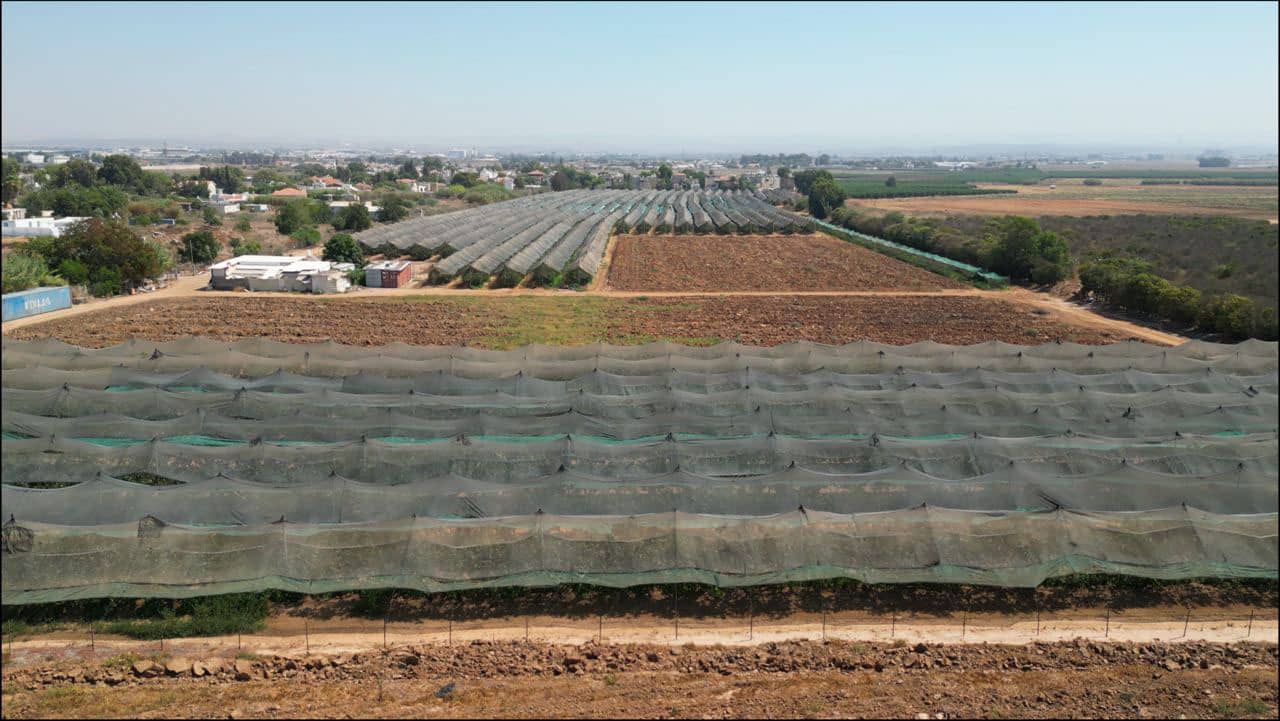To read more articles from The Media Line, click here.
For seven days each year, a decorated four-walled hut becomes home for the festive holiday of Sukkot, celebrated by Jews the world over.
The etrog (citron), a symbolic lemon-like fruit, is the centerpiece of the tradition. Some buyers will even pay thousands of dollars for the perfect specimen.
Sitting among visitors at an etrog orchard before the holiday, Rabbis and other prospective buyers are observed intimately studying individual fruit with magnifying glasses and careful, religious attention. Why a single piece of citrus can sell for so high a price comes down to several reasons—starting with what the etrog represents.

As part of the holiday traditions, the observant pray over four species of vegetation. Among several interpretations, rabbis say the four species represent unity among Jews of different types.
The leaves of a willow, or aravot, represent one who neither performs mitzvahs (good deeds) nor studies the Torah. The lulav, a palm frond, stands for one who studies Torah but does not perform mitzvahs. Hadasim, myrtle branches, represent one who performs mitzvahs but does not study Torah. And finally, the etrog symbolizes a person who both studies Torah and does mitzvahs. Therefore, the four species allude to the individual parts of a whole nation.
As such, each of the species must also meet individual criteria for ritual use on Sukkot. But none compare to the high standards of the etrog.

There are multiple varieties of etrog, and different Jewish communities have their own aesthetic and religious preferences among them. Some, for example, prefer the commonly used lemon-sized varieties; with or without a “gartel,” or ridge, around the center. Some prefer wart-like bumps all over while others prefer ridges only along the length. And some prefer the massive melon-sized Yemenite etrog.
Nevertheless, several agreed-upon qualifications are common to all the different etrogs.
“An etrog has to be at its best,” says etrog farmer Nachum Lurie to The Media Line. The Hebrew word for citrus fruit like the etrog is pri hadar, which literally means “glorious fruit.” Lurie adds that the etrog “has to have a nice shape and perfect cleanliness. It can’t have any marks whatsoever. Even a tiny black dot could render the fruit possel or unusable.”
The etrog must also come from a pure tree, neither grafted nor hybridized with other citrus fruits—and this is a tall order.
Dr. Saraleh Oren, senior guide at the Neot Kedumim Biblical Culture Nature Reserve, tells The Media Line that the fruit originally made its way to the land of Israel some 2,500 years ago during the Second Temple period, its path traced back to East Asia by way of the Persian Empire.
It is the first-known citrus fruit to reach the region, and it quickly became popularly identified as the so-called “glorious fruit” for religious use on Sukkot.
The massive 10-pound Yemenite etrog is the closest relative to this original variant, Oren says. One such etrog, grown at the Neot Kedumim Park, won a Guinness World Record in 2006.

“Not only is the lack of juice inside the flesh an indication of its ancient roots but so are accounts from ancient Jewish literature,” says Oren. “Rabbi Akiva,” the first-century Jewish sage, Oren relates, “is said to have entered the synagogue carrying an etrog on his shoulder. This account doesn’t make sense if Rabbi Akiva had been holding a small etrog.”
Size aside, the smaller etrogs like those grown by Nachum Lurie share the inner qualities with the Yemenite fruit.
Taking over the etrog orchard in Kfar Chabad, Israel, from his father-in-law; Lurie has been farming etrogs for decades. He tells of how his father-in-law grew the orchard from just a single etrog that was gifted to him after being blessed on Sukkot by the then-Lubavitcher rebbe of New York. The rabbi is said to have been able to confirm the fruit’s pure lineage based on its attributes.
Today, that single etrog has birthed tens of thousands of trees in the central Israel orchard.
Holding an etrog in his hands, Lurie demonstrates how the fruit must be symmetrical and tower-shaped (i.e., wider at the bottom and narrow at the top). It should be turning bright yellow from green, but not too ripe. The peel cannot be punctured in any spot, nor can it be too soft, cracked, dry, or stripped.
Finally, if the etrog grows with a stem-like protuberance (called a pitom, it is botanically the plant’s style and stigma, a holdout from the tree’s flowering bud), then that part cannot be broken off. If the pitom falls off naturally, that’s OK. The pitom is another indicator of the citron’s ancient roots. Modern citrus fruits like the orange and lemon do not have one.
Asked how often a perfect etrog grows, Lurie says, “Almost never. … It’s incredibly rare to find such an etrog whose shape and cleanliness is perfect.” But if you do happen to find one, “whatever you ask for it, you can get.”
Case in point, some “perfect” etrogs sell for thousands of dollars, despite becoming completely worthless the moment the holiday ends. And the pricing for subprime specimens is based on how close to perfection they are.

The intensive labor and time involved in growing the etrog is another factor in its cost. Fruit from trees younger than 3 years old cannot be used for religious purposes due to a Jewish law called orla.
But pure fruit trees like the etrog are typically weaker than hybrid citrus counterparts such as the modern lemon. “You have about three years [of use] from the trees,” Lurie says. “Even if they last longer because they’re not grafted, the fruit isn’t nice. It’s not worth keeping.”
In light of this, Lurie rotates his crop as judiciously as possible. Among the thousands of trees at his orchard, his plots are organized by age, with some plots left empty so the soil can rest.
Among the productive trees, monitoring is a more-than-full-time job. Practically everything leaves a mark on the flesh of the fruit—from insects that feed on them to the tree’s own branches and leaves.
“The minute the flower opens up, flies come in and the damage is done,” says Lurie. “So we tie the leaves back [to keep them from brushing against the growing fruit], and then even before the flower opens, you need to regularly spray the trees with pesticides to keep it bug-free. But the pesticides we use can also leave a mark. So we have to gradually weaken the strength of the pesticides” while increasing how often they’re sprayed.
And even then, after all this work, some 70% of the fruit never reaches the market.
“We start harvesting about three months ahead of the holiday and we continue until the last moment. We throw out about 50% right on the spot; they’re not usable at all. Then we grade [the remaining etrogs]. After a month or two, we check again, and some are spoiled. So another 20-30% is thrown out. Until you find a good one, it’s very hard.”
As for the color, if harvested early, Lurie sprays them with natural chemicals to slow their ripening. When harvested closer to the Sukkot festival, he speeds their ripening up.
“People think you make a lot of money but not really. It takes a lot of work and investment.”
So if you ever get a price shock at an etrog cart in the autumn … now you know why.






















 More news and opinions than at a Shabbat dinner, right in your inbox.
More news and opinions than at a Shabbat dinner, right in your inbox.